
If you’ve noticed that your cat is peeing a lot, it’s most definitely not a sign to be ignored. Whether it’s been going on for a while or is a recent change, increased peeing (urination) can be a symptom of serious illnesses and diseases in our pet cats.
Increased peeing is particularly concerning in older cats. It might be difficult to notice increased urination in cats that toilet outdoors, but for cats that use a litter box it should be easier to notice any changes in urination.
What My Cat Is Drinking a Lot Too?
We’ve established that increased peeing isn’t a good thing and it’s definitely something to be concerned about. It often occurs with increased drinking, so we discuss these two symptoms together. The clinical names for these, and ones that you might hear your vet use, is polyuria and polydipsia (PU/PD).
Increased drinking (polydipsia) is often much easier to notice than increased urination (polyuria), especially if the cat toilets outdoors as you won’t notice changes in their toilet habits, but you should see them drinking. An exception to this would be a mainly outdoor cat or a cat that only drinks outdoors.
If your cat is drinking more than usual, you might notice your cat drinking a lot of water in one sitting, drinking from places that they usually wouldn’t, or sometimes staying close to their water bowl or even hovering over it.
Signs that your cat is urinating or peeing a lot include large amounts of urine, wet spots, clumps in the litter tray, many large urinations in the litter tray daily and/or urinating in other places in the house besides the litter tray. Cats that are urinating normally usually urinate two to four times a day.
How Much Is Too Much?
How much is too much urinating or drinking? On average, a typical healthy cat will urinate less than 40 milliliters per kilogram of body weight per day and drink less than 45 milliliters per kilogram of body weight per day.
Drinking and urination averages also depend on the cat’s diet (cats that eat only dry food tend to drink more), activity levels (active cats generally drink a little bit more) and water supply (cats tend to drink more if a wide diameter bowl or a water fountain is provided).
Anything higher than these figures could be abnormal. It can be difficult to measure how much your cat urinates (urine output) unless they’re in a veterinary hospital setting, but it’s possible to measure how much your cat drinks.
This could be hard to measure though if you have multiple cats or if your cat drinks outdoors too, as it won’t reflect the total amount they’re drinking. Measuring water intake would be ideal for an indoor cat in a single cat household.
For example, Patches is a 4 kilogram domestic cat on a wet and dry diet with normal activity level. Based on 45 milliliters per kilogram of body weight per day of water, he should be drinking less than 180 milliliters of water per day. His owner measures out 250 milliliters of water and puts it in his water bowl.
At the end of 24 hours, his owner measures the water that’s left in the bowl. There’s 40 milliliters left, which means that Patches drank 210 milliliters of water. This is over the 180 milliliters range, which means that Patches is drinking a larger amount than normal.
This would make us suspicious that he is also urinating more than normal, and we may want to perform a few diagnostic tests to see if this is anything to worry about.
Why do I recommend putting out more water than the calculated amount? Because your cat’s bowl should always have water and you should never attempt to curb or restrict how much water they drink.
Drinking more than usual is a symptom and you should never attempt to control it by restricting the water intake. This could be detrimental to your cat’s health.
What Causes Increased Urination and Drinking?

Cats sometimes drink more than usual if you introduce a pet fountain.
Increased drinking and urination can be a sign of many diseases or illnesses, but the most common causes include:
- Chronic kidney failure/kidney disease
- Diabetes mellitus
- Hyperthyroidism
Increased drinking and urination is less commonly caused by:
- Liver disease
- Endocrine conditions (e.g., hyperadrenocorticism)
- Other kidney problems (e.g.,acute kidney injury, pyelonephritis)
- Electrolyte imbalances (e.g., hypercalcaemia)
- Pyometra
- Compensatory polydipsia (e.g., from water loss)
- Blood disorders (e.g., polycythaemia)
- Behavioral reasons (e.g., cognitive dysfunction)
- Change in diet (e.g., changing from wet diet to dry diet)
- Cancer
- Drug therapy (e.g., on longterm steroids)
What Should You Do if You Notice This?
If you notice that your cat is urinating and drinking a lot, schedule a physical examination with your veterinarian. Your vet will take a full history from you about the problem and examine your cat.
Your vet may do extra tests, such as blood tests to check kidney function, thyroid hormone levels and blood glucose levels, along with urine testing (urinalysis).
A urinalysis would examine the concentration of the urine (very important in this case), look for crystals (which can form urethral or bladder stones) and check for bacterial infections. Your vet may also decide to take blood pressure measurements and imaging (e.g., x-rays or ultrasound).
What Can Be Done To Treat This?
Treatment really depends on the cause of the increased urinating and drinking. Most cases of hyperthyroidism, diabetes and kidney disease can be managed with medications, diet and close monitoring by your vet. However, this depends on the severity and stage of the disease. Other, more uncommon, conditions causing increased urination and drinking might be more complex to treat.
If your vet suspects that the cause is due to diet or medication, they will help you make some changes.
In the meantime, if your cat is urinating and drinking a lot ensure that:
- You’re providing enough litter trays (one per cat plus one extra)
- The litter trays are easy for the cat to get to (one on each floor of the house)
- The cat’s litter is deep enough for your cat to dig and is ideally clumping litter
- Older arthritic cats can easily get in and out of their litter tray (e.g., cut down or cut out one side of the tray so they don’t have to climb or jump in and out)
- You have enough water stations throughout the house and provide an outdoor one if your cat goes outside
- You provide wide, shallow bowls and fill them to the top with clean water (these are a cat’s preference)
- You don’t restrict your cat’s water intake
- You measure their daily water intake (if your cat is indoors only and an only cat)
Increased Volume of Urine Versus Increased Frequency
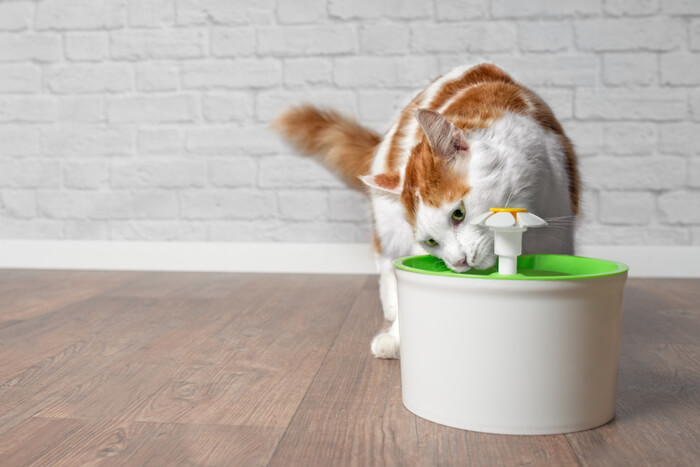
Pet fountains can entice cats to drink more water to stay cooler and more hydrated.
In this article, I mainly discuss what to do and how to recognize if your cat is peeing more, i.e., passing larger volumes of urine throughout the day. This isn’t to be confused with peeing a lot but not peeing more, i.e., peeing smaller amounts of urine throughout the day.
Increased frequency of urination, but with smaller amounts of urine, is a symptom of a different condition and one that often requires very urgent veterinary attention. This would be a symptom of feline lower urinary tract disease (FLUTD)
Symptoms of FLUTD include:
- Passing smaller amounts of urine more frequently
- Straining to urinate
- Vocalizing while urinating (indicating pain)
- Blood in the urine
- Sensitive to being picked up
- Changes in behaviour
FLUTD describes a number of related conditions in cats, including feline idiopathic cystitis (inflammation of the bladder), urolithiasis (stones or crystals in the lower urinary tract), urethral obstruction (when the cat can’t pass any urine due to a blockage in the urethra), bacterial cystitis (infection), anatomical defects, cancer and behavioral issues.
Urethral obstruction is the most serious as this means that the cat can’t pass urine at all; male cats that are overweight are particularly at risk of this. You might notice the cat straining to urinate with no urine passing out and the cat will be quite painful and sensitive to being picked up. This is a medical emergency and needs urgent attention.
Take Home Message
If you notice that your cat is urinating or drinking more, don’t ignore it. It may seem like a small thing, but it’s so important to get it checked out by your vet. Early detection of diseases is very important in order to get treatment started and prolong the life of your cat. You won’t regret getting it checked out!
Frequently Asked Questions
What causes excessive urination in cats?
There are many causes of excessive urination (polyuria) in cats. The main causes are diabetes mellitus, chronic kidney disease and hyperthyroidism. If you think your cat is urinating excessively, it's essential to bring them to your vet for a physical exam. Your vet may also perform blood and urine testing.
How much is too much peeing for a cat?
A healthy cat should urinate less than 40 milliliters per kilogram of body weight per day. This can vary depending on the cat's diet, environment and activity levels. It's difficult to measure this though, so if you notice large clumps in the litter tray or that the litter tray is being used more frequently, book your cat in for a checkup with their vet.
How many times a day should a cat urinate?
Usually, cats urinate two to four times daily. If your cat is urinating less or more frequently than that, it could be a sign of a lower urinary tract issue or excessive urination (polyuria). If this is the case, they would need a checkup with their vet.

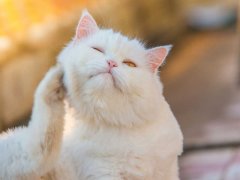
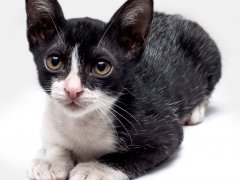


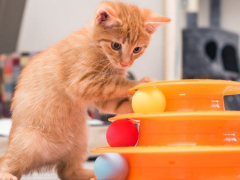
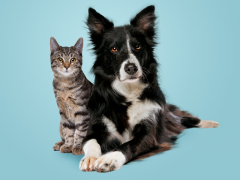

Can you advise me of a wet and/or dry food like Hill cd formula? My cat needs this type food per my vet but my cat will not eat Hills. I know there has to be more than one cd type food out there!
Hi Cindy,
If your cat won’t eat Hills c/d (after trying all the flavors), Royal Canin Urinary SO would be quite similar to this food. There are other brands that do urinary type foods also e.g. IAMs, Purina etc. but some of these wouldn’t be suitable for certain urinary conditions. Before changing the food, I would double check the new food with your vet as they know the details of your cat’s urinary problems the best.
I hope that helps,
Thanks
This did not answer my question. I am looking for a cat food other than Hills CD for my cat that has been diagnosed with a urinary problem. He will not eat the Hills wet or dry.
Hi Cindy, you might appreciate our article on the best cat food for urinary tract health. Hope this helps!
Thank you. I have read it and it did help. I am also going to try the Royal Canin suggested by the previous response. Weruva and Tiki also look possible solutions.
Raw food is best, just learn how to deal with potential harmful bacteria, i.e, dipping/blanching with boiling water.